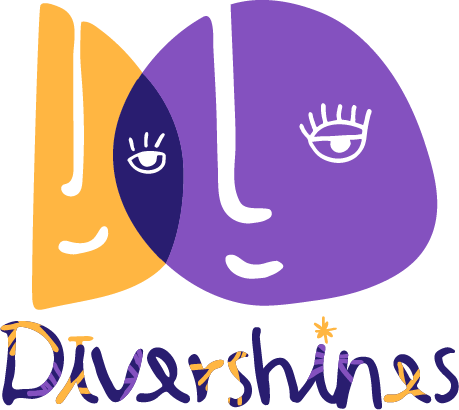Autism in the Workplace: Strategies for Success and Inclusion

Autism in the workplace: New employment trends must transform the landscape and focus on integration. Nowadays, discussing “Autism and Work” has become a priority for many organizations striving for diversity and innovation.
While the workplace could pose challenges for individuals with autism, it could also offer remarkable opportunities for success and inclusion. The goal is to create work environments where every talent, neurotypical or neurodiverse, is harnessed for collective success.
If you are interested about this topic focusing on the United States, we invite you to read our article: Jobs for Autistic Individuals: Overcoming Challenges and Finding Opportunities in the United States.
Understanding Autism in the Professional Context
- Characteristics and Impact in the Workplace:
Autism, characterized by differences in social communication and sensory processing, can influence a person’s experience in the workplace. For instance, a typical office environment could be overwhelming due to sensory stimuli such as bright lights or loud noises. Understanding these aspects is crucial for both autistic employees and their colleagues.
- Spectrum of Abilities:
Autism is a spectrum, meaning it manifests differently in each individual. While some may excel in analytical and detailed tasks, others may shine in creative roles. Embracing this diversity is key to leveraging the strengths of autistic employees.
Challenges and Opportunities
- Facing Barriers in the Workplace:
Common workplace challenges for people with autism include navigating social norms and dealing with sensory sensitivities. Misunderstandings can arise from different communication styles, potentially affecting teamwork and job performance.
- Harnessing Unique Strengths:
However, these challenges are only one side of the coin. Many autistic individuals bring exceptional skills, such as heightened focus, meticulous attention to detail, and innovative problem-solving abilities. Recognizing and harnessing these strengths can be a game-changer for companies.

Effective Job Search Strategies for Autistic Individuals
- Finding the Right Fit:
Job hunting can be daunting, especially for someone with autism. It’s important to identify roles that align with one’s strengths and work environments that provide support. Using job boards focused on neurodiversity can be a good starting point.
- Interview Preparation:
Interviews can be particularly challenging due to the emphasis on social skills. Autistic job seekers may find it beneficial to prepare thoroughly, perhaps even openly discussing their autism to lay the groundwork for a transparent relationship with potential employers.
Creating an Inclusive Workplace: A Guide for Employers
- Embracing Diversity:
Workplace inclusivity goes beyond mere accommodation; it’s about valuing different perspectives and creating a supportive environment. This includes offering flexible work arrangements, providing clear communication, and ensuring accessibility.
- Adaptation and Support:
Small changes can make a big difference. For instance, offering noise-canceling headphones, allowing breaks in quiet spaces, or providing written instructions can help autistic employees thrive.

Success Stories: Autistic Individuals Thriving in Diverse Careers
- Inspirational Journeys:
There are many success stories of autistic individuals excelling in various fields, from technology to the arts. These stories not only inspire but also demonstrate the potential of autistic talent when nurtured properly. We invite you to visit our Top Shines section where we discuss successful stories of neurodivergent individuals.
- Companies Leading the Way:
Several companies have been recognized for their inclusive hiring practices. Showcasing these organizations can provide valuable models for others looking to create more neurodiversity-friendly workplaces.
Embracing autism in the workplace is more than an act of inclusion; it’s a step towards harnessing a diverse range of talents and perspectives that drive innovation and growth. The union of “Autism and Work” presents unique challenges, but more importantly, it offers opportunities for companies to evolve towards more dynamic, understanding, and creative environments.
For individuals with autism, the professional world can be a landscape of untapped potential. With the right strategies, support, and workplace culture, they can not only find their place but also excel in their chosen careers. Employers, on the other hand, benefit from the unique skills and perspectives that autistic employees bring to their roles, from exceptional attention to detail to innovative problem-solving approaches.
Moving forward, it’s paramount for both employers and employees to engage in open dialogue, continuous learning, and adaptation to the needs of the neurodiverse workforce. Success stories of autistic individuals thriving in diverse careers are not just isolated accounts; they are blueprints for what is possible when inclusivity is not just an idea but a practiced reality.
The duo of “Autism and Work” is not just a topic of discussion; it’s a call to action. It urges us to rethink our conventional approaches to hiring, training, and management, fostering a workplace that values and harnesses the inherent strengths of neurodiversity. As we embrace these principles, we pave the way for a more inclusive, productive, and innovative future, where autism is not seen as a barrier but as a unique facet of the rich tapestry of the workforce.
References
- “The Autism Job Club: The Neurodiverse Workforce in the New Normal of Employment” by Michael Bernick and Richard Holden. https://www.barnesandnoble.com/w/the-autism-job-club-michael-s-bernick/1120974357
- “NeuroTribes: The Legacy of Autism and the Future of Neurodiversity” by Steve Silberman. https://www.amazon.com/Neurotribes-Legacy-Autism-Future-Neurodiversity/dp/0399185615
- ” In our own words: Employment on the spectrum “, Autism Speaks. https://www.autismspeaks.org/blog/our-own-words-employment-spectrum
- “Employing autistic people – a guide for employers” , National Autistic Society. https://www.autism.org.uk/advice-and-guidance/topics/employment/employing-autistic-people/employers
- “Autism-friendly guides”, National Autistic Society (UK). https://www.autism.org.uk/advice-and-guidance/topics/autism-friendly-guide
- “Wokplace Inclusion Now”, Autism Speaks (US): https://www.autismspeaks.org/employment
- The Spectrum Works: A non-profit organization that provides job training and employment opportunities for individuals with autism: https://thespectrumworks.org/


